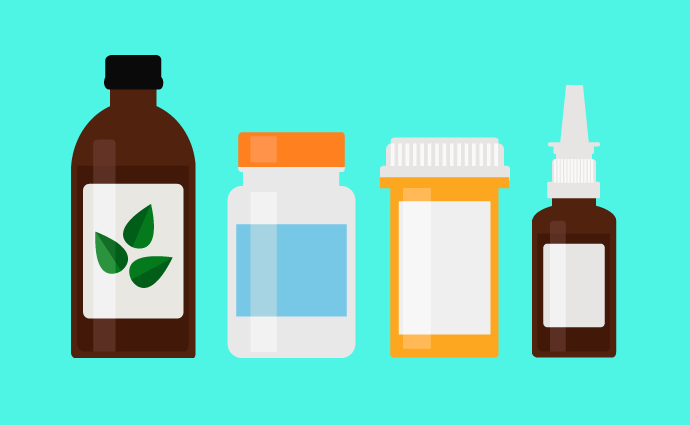Hospital Prescription Drug Spending Increased 18.5% Per Admission
A new study shows hospital prescription drug spending continues to grow as drug companies increase the prices of their products.

Source: Thinkstock
- Average total hospital prescription drug spending per admission rose by 18.5 percent between the 2015 and 2018 fiscal years, according to a new study conducted by NORC at the University of Chicago.
Hospitals spent an average of $555.40 per adjusted admission during the three-year period, which resulted in $1.8 million in new prescription drug spending for the average hospital.
Researchers also found:
- Outpatient drug spending per admission increased by 28.7 percent during the period
- Inpatient drug spending per admission rose by 9.6 percent between FY 2015 and FY 2017 after a 38 percent increase from FY 2013 and FY 2015
- Growth in expenditures per hospital admission on inpatient drugs exceeded the Medicare reimbursement update five-fold during the period
- Over 90 percent of surveyed hospitals said they had to identify alternative therapies to manage spending
- One in four hospitals had to reduce staff to mitigate budget pressures
“For hospitals and health systems, high drug costs are putting enormous pressure on their budgets and forcing them to make tough choices, such as delaying infrastructure projects, having to find workarounds with alternative medicines, cutting back on services, and even reducing staff,” stated the AHA’s President and CEO Rick Pollack in a Jan. 15 media call.
NORC studied the impact on drug pricing in conjunction with the American Hospital Association (AHA), the Federation of American Hospitals (FAH), and the American Society of Health-System Pharmacists (ASHP).
READ MORE: Leveraging Group Purchasing for Hospital Supply Chain Management
Rising drug prices are driving the dramatic growth in hospital prescription drug spending, revealed the data from surveys, informative interviews, and two group purchasing organizations (GPOs).
For the top ten drugs with the highest total hospital spending in 2017, the average unit price jumped by 9.9 percent between 2015 and 2017. Although drug price increases significantly varied by product.
For example, unit prices for Activase, a widely used drug to treat heart attacks and stroke, increased by 18.8 percent during the period, reaching $4,143 in 2017.
Three immunosuppressants (Remicade, Humira, Enbrel) had unit prices that increased between 15 and 21 percent from 2015 to 2017.
Researchers added that other drugs besides those with the highest total hospital spend also saw significant price increases during the period. In fact, the ten drugs with the largest percentage increases in price during the period generated $1 million or more in hospital spending by 2017.
READ MORE: Looking Beyond Price in the Healthcare Supply Chain to Add Value
Unit prices for each of the ten drugs increased by more than 50 percent over the study period.
FAH’s President and CEO Chip Kahn pointed out that the drug price increases are impacting generic and brand-name drugs.
“It’s not just pre-FDA drugs and generic drugs, which dramatically increased since our 2016 study, but it is brand drugs, too,” he said. “The point here is that there is some shadow pricing where the growth of the brand drugs is shadowed by generics. So, the value of having lower cost generics is lost because of the practices of the industry. Both drugs turn out to be very expensive.”
Additionally, the report found that drug shortages are exacerbating the hospital prescription drug spending problem. Approximately 80 percent of surveyed hospitals said shortages resulted in increased spending to a moderate or large extent.
When hospitals cannot access drugs because of a shortage, they often turn to higher-priced off-contract alternatives. They also use additional resources to resolve the effects of drug shortages on patient care.
READ MORE: Data Analytics Add Value to Healthcare Supply Chain Management
“Each shortage is an emergency,” Erin Fox, PharmD, BCPS, FASHP, Senior Director of Drug Information and Support Services at the University of Utah Health, stressed in the media call.
“All hands are on deck. We have to figure out very, very quickly how much product we have, how long we expect it to last, and figure out strategies to make it last longer. Sometimes that requires significant work, like re-packaging larger vials into smaller syringes. Looking to see what else we can purchase. Can we immediately make some off-contract purchases to help stretch our supply?”
Off-contract or alternative purchases can increase hospital prescription drug spending.
“In some cases, we have to use outsourcing compounders,” she explained. “Those can be a great choice for some folks. But we also don’t have a lot of data on the quality of those compounders. There’s an additional risk for the hospital. Also, those compounders can be very expensive.”
The AHA anticipates the report’s findings to put “drug companies on notice,” Pollack said. “Hospitals are working hard to hold down their costs and drug makers need to do the same.”
The AHA leader urged all healthcare stakeholders, including policymakers, to work together to develop solutions that can control drug prices.
“Specifically, we recommend solutions that foster transparency in value and encourage increased competition and innovation. For example, we advocate for policies that go after anti-competitive behavior, like pay-for-delay and evergreening,” he said.
To address drug shortages, the hospital association recently advised the FDA to strengthen drug shortage disclosure requirements for manufacturers, incentivize manufacturing contingency plans and/or redundancies, improve production transparency requirements, and enact shortage disclosure notification requirements for certain medical devices needed to administer drugs.
The FDA should also consider drug shortages a national security threat and consider the potential risk for shortages when it reviews drug company merger proposals, the AHA recommended.
But policy reform isn’t necessarily the only answer, FAH’s Kahn added. Hospitals should also act.
“It’s hopefully going to be dealt with by hospitals becoming more aggressive as players in the market to assure that those drugs are available to their patients,” he said. “Maybe that will shake the market up. Something needs to. The results of the study clearly show drug companies are misusing their leverage.”
